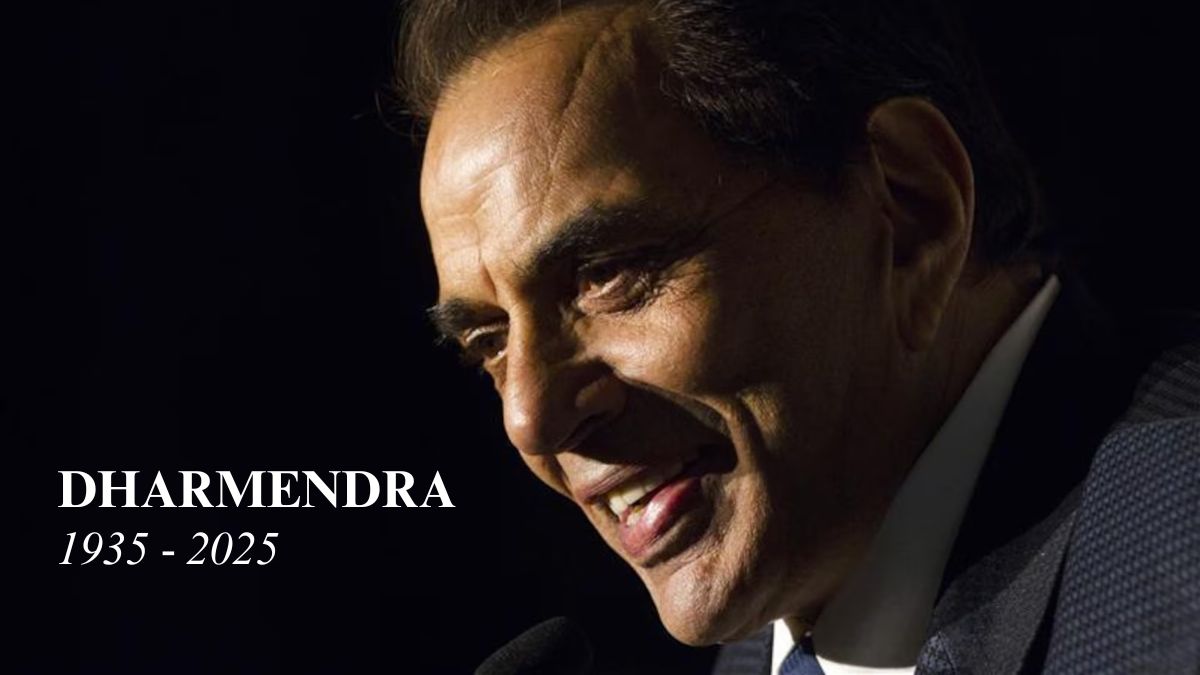In the passing of Dharmendra, Indian cinema has not just lost a star. It has lost its presence. A warmth. A man who represented a certain unvarnished integrity—both on screen and off it—that Bollywood has long forgotten. For over six decades, Dharmendra remained not merely an actor but a cultural memory etched into millions of hearts, from the single-screen halls of the 1960s to the streaming-age nostalgia of today. His journey was never linear, never sculpted by privilege. Born as Dharam Singh Deol in 1935 in Sahnewal, Punjab, his childhood was far from glamorous. He was the son of a schoolteacher, raised amid fields, tractors, and the rugged simplicity of rural life. The iron in him—later immortalised as Bollywood’s “He-Man”—was forged first by hardship and then by a relentless desire to break free. Not to escape his roots, but to honour them. When Filmfare announced its talent hunt in the late 1950s, the young Dharmendra travelled to Bombay with little more than ambition and a photograph. There were no connections, no godfathers, no family compounds in Juhu. Just dreams. That rawness stayed with him throughout his career: the face of a man who had lived life before acting it. His early years in the industry were marked by struggle, but talent—real talent—cannot be contained for long. Directors noticed a rare combination: exceptional screen presence, understated masculinity, and eyes capable of conveying yearning without words. He debuted with Dil Bhi Tera Hum Bhi Tere (1960), but it was the early ’60s emotional dramas and romantic films that established him as the thinking woman’s hero. Unlike the swaggering machismo of later stars, Dharmendra’s masculinity was soft-edged, almost poetic. He could be vulnerable without losing strength, tender without losing dignity. By the mid-1960s and early 1970s, he transitioned effortlessly into the action icon India would celebrate for generations. Films like Phool Aur Patthar (1966) did not just make him a star—they made him a phenomenon. The shirtless scene that became a national sensation was not merely about physique; it was about presence. Dharmendra moved with the ease of someone who didn’t need to pretend. He didn’t need over-stylised action sequences, camera tricks, or exaggerated dialogues. His authenticity was the special effect.

Yet it is unfair to remember him only as the “He-Man.” His comic brilliance in Sholay (1975) remains unmatched. As Veeru, he delivered humour that felt spontaneous, organic, and human. His chemistry with Amitabh Bachchan was effortless; with Hema Malini, electric. Those moments on the water tank, half-drunk and fully love-struck, became part of India’s cinematic folklore. But behind the spotlight was a man who lived life with the same emotional intensity he brought to the screen. Dharmendra was never a sculpted star born in studios. He was flesh-and-blood—romantic, impulsive, and unguarded in his affections. His love for Hema Malini, which blossomed on sets and ultimately led to their marriage in 1980, remains one of Bollywood’s most mythologised romances. It was a story of passion, persistence, and a heart that refused to follow rules manufactured by society or the industry. He took criticism, gossip, and controversy head-on, without bitterness. For Dharmendra, love was not a scandal—it was destiny. What makes his legacy singular is that even after delivering hits across five decades, he never allowed fame to harden him. Co-stars spoke of his generosity, crew members of his humility, and fans of his warmth. He was a superstar who still greeted strangers with folded hands. Dharmendra’s death is not just the curtain falling on an era. It is the fading of a kind of honesty that Indian cinema has forgotten how to cultivate. For millions, he will remain the man from Punjab who conquered Bollywood without losing his soul. A national treasure whose life—like his films—was full of heart. The last real He-Man is gone. But his light, and his gentle smile, will never dim.




